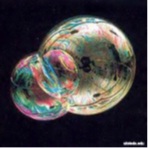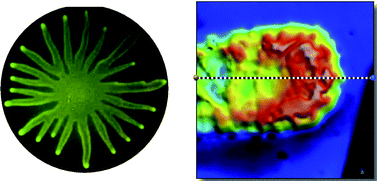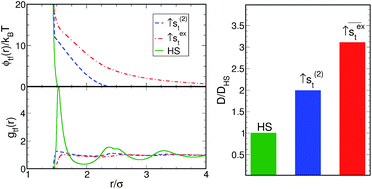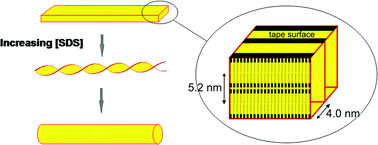This month sees the following articles in Soft Matter that are in the top ten most accessed for January:
Solvent-assisted poly(vinyl alcohol) gelated crystalline colloidal array photonic crystals
Cheng Chen , Yihua Zhu , Hua Bao , Peng Zhao , Hongliang Jiang , Liming Peng , Xiaoling Yang and Chunzhong Li
Soft Matter, 2011,7, 915-921
DOI: 10.1039/C0SM00923G
Self-healing hydrogels formed in catanionic surfactant solutions
Gizem Akay , Azadeh Hassan-Raeisi , Deniz C. Tuncaboylu , Nermin Orakdogen , Suzan Abdurrahmanoglu , Wilhelm Oppermann and Oguz Okay
Soft Matter, 2013,9, 2254-2261
DOI: 10.1039/C2SM27515E
Droplet mobility on lubricant-impregnated surfaces
J. David Smith , Rajeev Dhiman , Sushant Anand , Ernesto Reza-Garduno , Robert E. Cohen , Gareth H. McKinley and Kripa K. Varanasi
Soft Matter, 2013,9, 1772-1780
DOI: 10.1039/C2SM27032C
Self-assembly of diblock copolymers under confinement
An-Chang Shi and Baohui Li
Soft Matter, 2013,9, 1398-1413
DOI: 10.1039/C2SM27031E
Supramolecular hydrogels for creating gold and silver nanoparticles in situ
Jiang-Shan Shen , Yi-Lin Chen , Jia-Le Huang , Jin-Dun Chen , Cong Zhao , Yang-Qing Zheng , Tao Yu , Yi Yang and Hong-Wu Zhang
Soft Matter, 2013,9, 2017-2023
DOI: 10.1039/C2SM26878G
Stimuli-responsive surfactants
Paul Brown , Craig P. Butts and Julian Eastoe
Soft Matter, 2013,9, 2365-2374
DOI: 10.1039/C3SM27716J
Fluid–solid transitions in soft-repulsive colloids
Divya Paloli , Priti S. Mohanty , Jérôme J. Crassous , Emanuela Zaccarelli and Peter Schurtenberger
Soft Matter, 2013,9, 3000-3004
DOI: 10.1039/C2SM27654B
Rolling particle lithography by soft polymer microparticles
Francesca Di Benedetto , Vito Fasano , Luana Persano , Claudio Maruccio , Elisa Mele , Giovanni Potente , David A. Weitz , Laura De Lorenzis and Dario Pisignano
Soft Matter, 2013,9, 2206-2211
DOI: 10.1039/C2SM27327F
Comment on “Innovation through imitation: biomimetic, bioinspired and biokleptic research”
Manfred Drack and Ille C. Gebeshuber
Soft Matter, 2013,9, 2338-2340
DOI: 10.1039/C2SM26722E
Disulfide crosslinked PEGylated starch micelles as efficient intracellular drug delivery platforms
Aiping Zhang , Zhe Zhang , Fenghua Shi , Jianxun Ding , Chunsheng Xiao , Xiuli Zhuang , Chaoliang He , Li Chen and Xuesi Chen
Soft Matter, 2013,9, 2224-2233
DOI: 10.1039/C2SM27189C
Why not take a look at the articles today and blog your thoughts and comments below.
Fancy submitting an article to Soft Matter? Then why not submit to us today!
To keep up-to-date with all the latest research, sign up for the Soft Matter e-Alert or RSS feeds or follow Soft Matter on Twitter or Facebook.
















